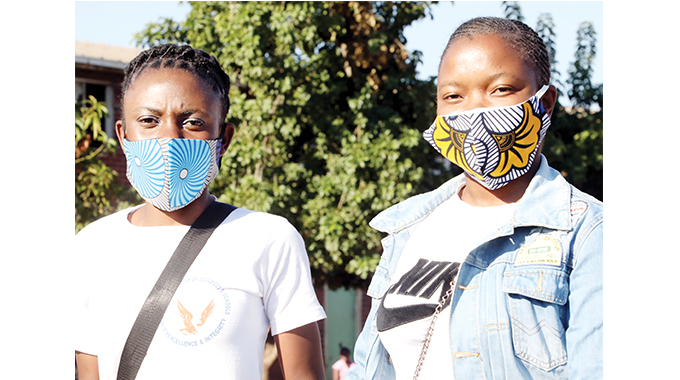COMMENT: Follow WHO guidelines on face masks

There has been a big debate worldwide over the efficacy of face masks in preventing transmission and contraction of the coronavirus.
Covid-19 being a new disease, this has been a shifty debate, so to speak, with the World Health Organisation (WHO) at some point discouraging people from wearing them and the US Centres for Disease Control (CDC) arguing the other way.
“There is currently no evidence that wearing a mask (whether medical or other types) by healthy persons in the wider community setting, including universal community masking, can prevent them from infection with respiratory viruses, including Covid-19,” WHO said on April 6.
The world body recommended special masks (N95 masks or equivalent) plus other protection for health-care workers working with people who have, or are suspected to have Covid-19.
By contrast, the CDC recommended everyone to wear masks to prevent infected people passing on the infection, not to prevent the wearer getting infected.
The conflicting signals from these authorities in global health matters created much confusion among the general public.
We however, recognise that research has been ongoing including within the WHO. As new findings emerge, the advice on masking is changing accordingly.
The latest WHO guidance was announced on Friday saying people must wear face masks when in public areas to reduce the risk of transmitting and contracting the virus. WHO reiterated the importance of the usual personal hygiene measures such as frequent hand washing with soap, sanitisation and social distancing.
WHO director-general Dr Tedros Adhanom Ghebreyesus said Friday that in light of evolving evidence, his organisation advised governments to encourage the general public to wear masks where there is widespread transmission and physical distancing is difficult, such as on public transport, in shops or in other confined or crowded environments.
“Yet, a homemade cloth mask might be needed in certain community settings,” WHO said in a statement.
“For example, in community settings where community-based transmission has been documented, a homemade cloth face mask should be worn by community members. The purpose of wearing a homemade cloth mask is to reduce the transmission of the Covid-19 virus in community settings from individuals who may be asymptomatic but spreading the virus. In short, homemade cloth masks may offer marginal protection from droplet and airborne infections from asymptomatic persons by reducing the number of respiratory droplets from them to others. Of note, wearing a homemade medical mask for asymptomatic individuals in communities with community transmission is similar in principle to an individual coughing or sneezing into their inner elbow.”
Deciding to err on the side of caution, many governments, welll before the latest WHO guidance, made it mandatory for their people to don the coverings. Our government made that declaration that took effect on May 4. It ordered people to wear masks, including homemade ones or any material such as scarfs that could cover one’s nose and mouth while allowing them to breathe.
With everyone now obliged to put on the mask, and bearing in mind that many of us are fashioning them ourselves at home, it became necessary for WHO to guide the public on how to sew and take care of them.
Homemade cloth masks can be made from many different materials that are readily available within the community, WHO said, but preliminary data shows that masks made up of two or more cloth layers are more effective at keeping particle penetration lower than single-layered ones. Wearers must ensure that homemade cloth masks are dry at all times, may be worn up to three hours without an increase in particle penetration and must be cleaned daily using hot water in a basin with laundry detergent. If hot water is unavailable, cold water with 0.05 percent chlorine should be used. Also, the masks should be soaked for 30 minutes and then be rinsed with water and laundry detergent.
The WHO guidance as announced by Dr Ghebreyesus on Friday puts to rest the debate, rather confusion, on the efficacy of face masks as a way to control the transmission and contraction of Covid-19. Even the doubters, those who laughed at colleagues wearing face masks, must follow the new advice from the globe’s most authoritative voice on health matters.
Tailors who have found an opportunity in the disaster must upgrade their masks from single material outfits to two or three material outfits so that they provide better cover against transmission and contraction of the virus.
We know that not all businesspeople are trustworthy. Some of them might continue producing the single material masks in an effort to make a fast buck. We therefore advise our people to put such businesspeople in line by not buying their risky masks and only buy those made of two or more materials as the WHO says.
In addition to wearing proper masks covering their mouths and noses and thoroughly cleaning them in hot or chlorinated water, our people must not forget that social distancing, frequent hand washing, practising sound respiratory hygiene, being always alert to any flu-like symptoms and presenting themselves to appropriate health workers when the need arises is the winning combination.












Comments